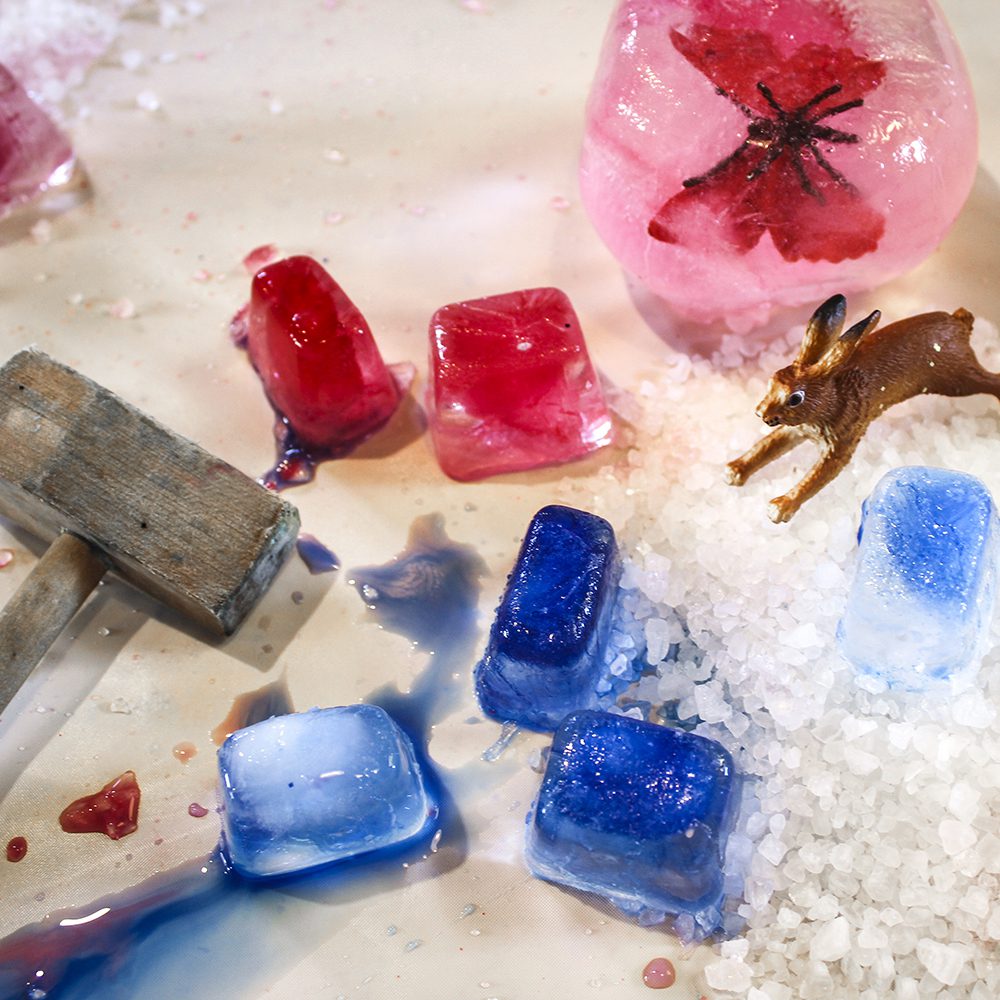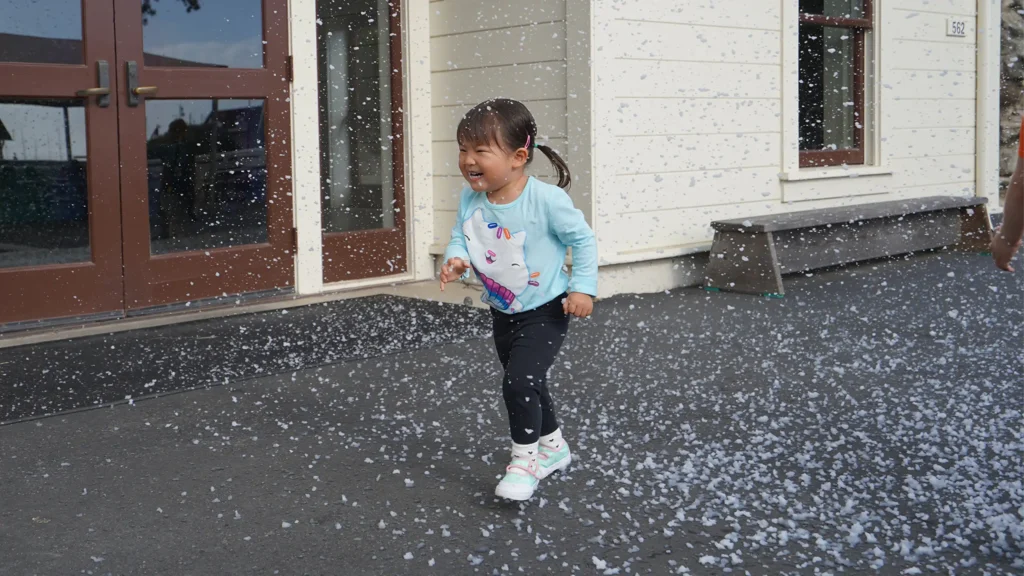
Find the best way to excavate frozen objects! Using a variety of tools, try to get items out of blocks of ice. This activity helps children learn problem solving skills and persistence.
Materials Required
- Items to freeze, such as leaves, shells, sticks, rocks, pennies, etc.
- Plastic containers of different shapes and sizes to freeze the items in
- Large bowls or flat plastic tubs
- Toothbrushes or nail brushes
- Eyedroppers
- Salt
- Towels
- Flashlights
- Water
Instructions
- Place items like leaves, shells, rocks, and pennies into plastic containers filled with water. Place in freezer.
- Once frozen, pop out the ice cubes and place them into a large bowl or flat plastic tub.
- Look at the materials available as tools. Use these tools to excavate the items out of the ice. Things to consider:
- How will you use each tool?
- What do you think will happen when you use each tool?
- How can you get the items out of the ice?
- What other tools could you use?
- What other techniques could you try?
Additional Tips
Try these add-on activities:
- Have an excavation race! Freeze similar items in the same amount of water and race against someone else to see who can get the items out first. Afterwards, discuss how each child got the items out. What was the fastest method? The slowest method? The most creative method?
- Freeze small items in water balloons instead of plastic containers. Place the item in the balloon, fill it with water, and then freeze it. Once it is frozen, cut the balloon off. Excavating objects from a rounded shape is another fun challenge!
Links to Research
This activity requires both flexibility and persistence, which are cognitive and affective components of creativity. Children must remain persistent in the task, but also willing to change their problem-solving tactics if necessary. Both divergent and convergent thinking are essential to successfully complete the excavation. Divergent thinking produces a multitude of potential excavation methods, while convergent thinking is utilized to decide on the method that is most likely to be successful. The cycle between divergent and convergent thinking gives birth to the creative thinking process.
Supporting research includes:
Cropley, A. (2006). In Praise of Convergent Thinking. Creativity Research Journal, 18(3), 391-404.
Nijstad, B.A., De Dreu, C.K.W., Rietzschel, E.F., & Baas, M. (2010). The dual pathway to creativity model. European Review of Social Psychology, 21, 34 – 77.






